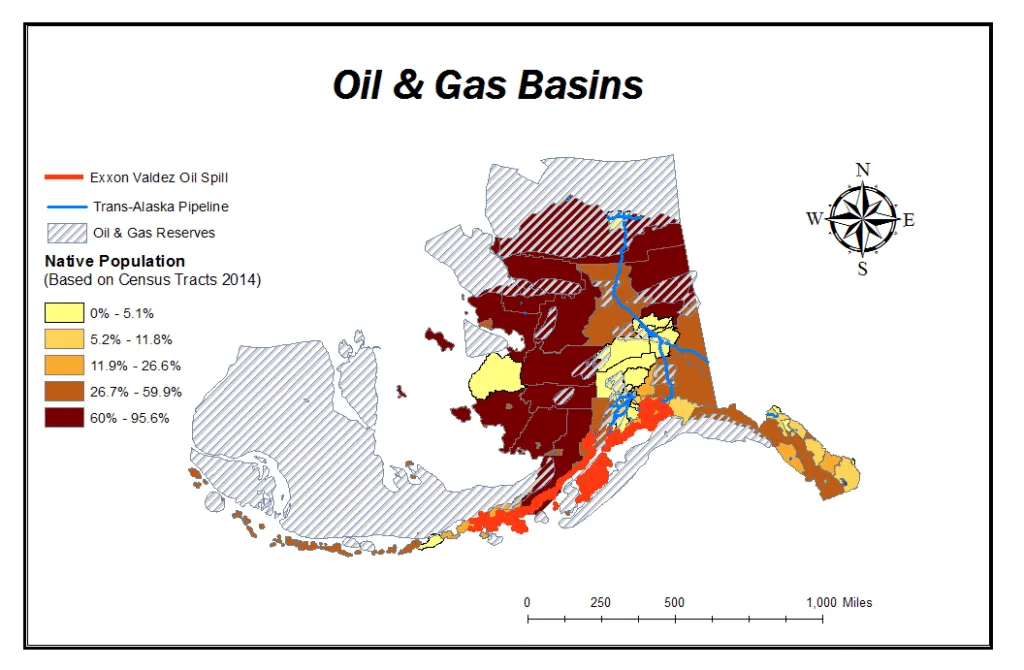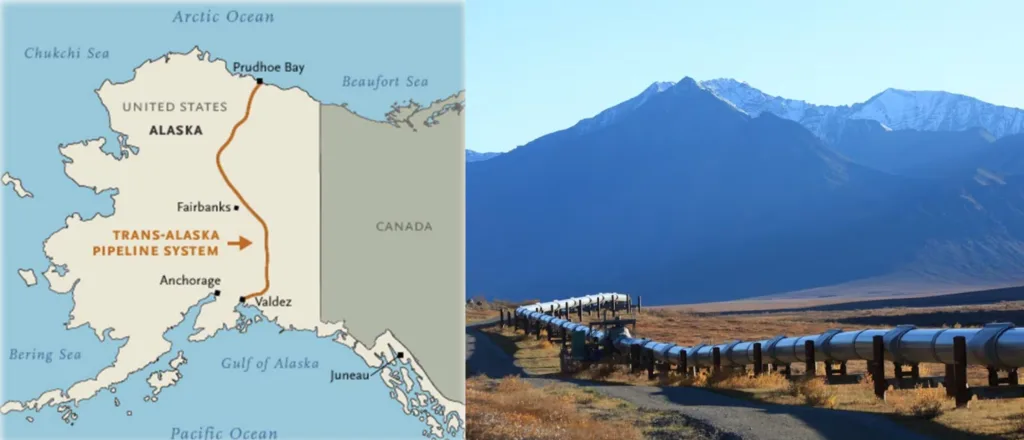Contents
Alaska, the largest territory in the United States, has a deep-rooted and multifaceted history spanning thousands of years.
The land’s history was shaped by its ancient native people, then by Russian control in the 1700s and 1800s. After that, Americans took over the area, turning it into a U.S. state.
Alaska’s history is a reflection of its vast natural resources, diverse cultural heritage, and strategic military importance. In addition to exploration and settlement, Alaska’s history also includes endurance, flexibility, and transformation.
Pre-Colonial and Indigenous History (Pre-1500s)
The lands and regions that compose Alaska had various indigenous peoples inhabiting there before European explorers began to venture across the Pacific to the North American continent.
Generally, there were several regional and cultural families—the Inuit, or Eskimo peoples; the Aleut; Athabaskans; and the Tlingit’s, to mention a few—with distinct traditions, languages, and lifestyles.
Historical evidence demonstrates human presence in Alaska for at least 10,000 years by way of an early migration over the Bering Land Bridge known as Beringia, in northeastern Asia.

Tribes in Alaska

There are 229 federally recognized tribes in Alaska. These tribes belong to several main cultural groups, including the Inuit, Aleut, Athabaskan, Tlingit, Haida, Tsimshian, and Alutiiq. These tribes are spread across the icy Arctic coast, the forested interior, and the island chains.
However, the main Native tribal groups in Alaska: the Inuit, the Aleut, and the Athabaskan.
The Aleuts and the Inuit
Tribes in Alaska
The Aleutian Islands, which are located between the North Pacific Ocean and the Bering Sea, were the traditional home of the Aleuts. They were quite good at marine hunting, especially for seals and sea otters, and they used advanced equipment and techniques to capture marine creatures.
They created innovative technologies to navigate and survive in the harsh Aleutian environment, and their economy was centered on harvesting, fishing, and gathering.
The northern portions of Alaska and other Arctic regions were home to the Inuit, commonly referred to as Eskimo communities. They created specialized hunting and survival strategies for the Arctic’s icy climate, like building igloos and using narrow boats to hunt marine creatures. Their large families served as the core of their social systems, and they relied on.
The Athabaskans and Coastal Tribes
Tribes in Alaska
In the interior of Alaska, the Athabaskan people lived in the woodlands and highland regions. They hunted caribou, moose, and other game, and they were skilled in catching fish.
Their societies were organized into smaller family units and extended clans, and they spoke various Athabaskan dialects. These groups, such as the Dene and Gwich’in, thrived in a land of thick forests and rocky mountains.
Along Alaska’s southern coast, the Tlingit, Haida, and other groups developed intricate social structures and were heavily reliant on fishing and hunting. They were known for their elaborate arts, including totem pole carving and weaving, and they built large timber houses and village settlements along the coast.
History of Alaska
Russian Exploration and Colonisation (1741–1867)
The history of Alaska’s exploration by Europeans begins with the Russian Empire in the mid-18th century. The first European to reach Alaska was Vitus Bering, a Danish explorer sailing for Russia. In 1741, Bering and his crew arrived on the Alaskan coast, marking the start of Russian involvement in the region.
The Russians were drawn to Alaska primarily for its valuable fur-bearing resources, particularly sea otter pelts. They established a series of outposts and settlements along the coast, which became known as Russian America.
The Russian-American Company, a government-chartered enterprise, dominated trade and established a presence on the Aleutian Islands, Kodiak Island, and along the southern shoreline.
Russian settlers relied heavily on indigenous labour, often compelling the Aleuts and other native groups for hunting otters which leaded to servitude. The Russians also introduced Orthodox Christianity, building chapels and converting many indigenous peoples to the faith.
The Russian Orthodox Church played a significant role in Alaska’s history, leaving behind numerous churches, many of which are still active today.
By the 19th century, Russia’s control over Alaska was declining. The colony was expensive to maintain, and the Russian Empire was facing financial strain. The threat of British or American expansion also loomed large, and in 1867, Russia made the decision to transfer Alaska to the United States.
The Alaska Purchase (1867)
On March 30, 1867, the United States, under Secretary of State William H. Seward, finalized the purchase of Alaska from the Russian Empire for $7.2 million, or about two cents per acre.
This deal, which came to be known as Seward’s Icebox (due to the widespread belief that Alaska was a frozen wasteland), was initially met with doubt and mockery.
The Alaska Purchase
Strategic and Economic Significance
At the time, Alaska’s strategic value was not immediately obvious to many Americans. However, the acquisition allowed the U.S. to expand its influence into the Pacific, gaining control of vital ocean routes and resources.
Later, the discovery of gold, oil, gas, and other valuable resources (fish, timber) has turned Alaska into an invaluable asset to Americans.

While many viewed the purchase as a blunder in the short term, it eventually proved a brilliant move in American expansionism.
Alaska as a U.S. Territory (1867–1959)
After the purchase, Alaska was initially a sparsely populated and largely unmapped frontier. However, it soon became clear that the territory held tremendous potential.
The Klondike Gold Rush (1896–1899)

One of the most significant events in Alaska’s early history as a U.S. territory was the Klondike Gold Rush. In 1896, gold was discovered in the Klondike region of the Yukon, just north of Alaska.
The news of the discovery led to an influx of miners and pioneers into the area. Although much of the gold was found in what is now Canada, the rush brought thousands of people to Alaska, and towns like Nome and Fairbanks were formed.
The gold rush brought wealth to the region but also led to environmental harm and further displacement of indigenous peoples, many of whom were forced to adapt to the changing economic landscape and social conditions.
History of Alaska
Early Infrastructure and Military Presence
By the early 20th century, the United States began to develop the infrastructure of Alaska. The Alaska Railroad was completed in 1914, linking the southern port of Seward with Fairbanks in the heartland. The railroad became a vital transportation route for goods and people and helped further connect Alaska to the U.S. economy.
During World War II, Alaska’s military importance became evident. The Japanese military attacked the Aleutian Islands in 1942, marking the only foreign assault on U.S. soil during the war.
In response, the U.S. government built numerous military bases in Alaska, including airfields, radar stations, and logistics hubs. The war led to the construction of the Alaska Highway, which is the main land route, although it goes through Canada. (It is 2,237 kilometers long and starts at Dawson Creek in Canada)

Statehood and the Modern Era (1959–Present)
After years of debate and political lobbying, Alaska became the 49th state of the United States on January 3, 1959. The path to statehood was a long and complicated one, but the discovery of vast oil deposits in the 1960s played a crucial role in speeding up the process.
The Discovery of Oil and the Trans-Alaska Pipeline

In 1968, oil was discovered at Prudhoe Bay on the North Slope of Alaska, revolutionizing the state’s economy. The oil boom was a turning point, as revenues from oil extraction made Alaska one of the richest states in the U.S.
The construction of the Trans-Alaska Pipeline, completed in 1977, allowed oil to be moved from Prudhoe Bay to the port of Valdez, where it could be shipped to processing facilities in the Lower 48 states.
Native Land Claims and the Alaska Native Claims Settlement Act
In 1971, the U.S. government passed the Alaska Native Claims Settlement Act (ANCSA), which resolved land claims by Alaska’s indigenous peoples. Under the act, Alaska Natives were given land and financial restitution in exchange for relinquishing their claims to traditional homelands.
The act also established regional corporations owned by Native Alaskans to oversee land and resources, including the profitable oil reserves.
Modern Challenges and Environmental Issues
Today, Alaska faces numerous challenges, including climate change, which is having a disproportionately intense impact on the region. Melting ice, coastal erosion, and unpredictable weather patterns are threatening indigenous communities, ecosystems, and infrastructure.
There is also ongoing debate over resource extraction and the environmental risks posed by oil drilling and resource mining.
In addition, Alaska remains a place of cultural and political tension, as indigenous groups continue to fight for greater recognition, self-governance, and compensation for historical wrongs.
Conclusion
Alaska’s history is a complex and multifaceted tale of exploration, colonization, cultural resilience, and transformation. From the first indigenous inhabitants to the Russian Empire, American expansion, and the modern oil boom, Alaska has played a central role in shaping both U.S. history and global strategy.
Today, Alaska remains a symbol of both the beauty and severity of the American frontier, as well as a region that continues to confront the challenges of balancing development with environmental conservation and cultural heritage.
